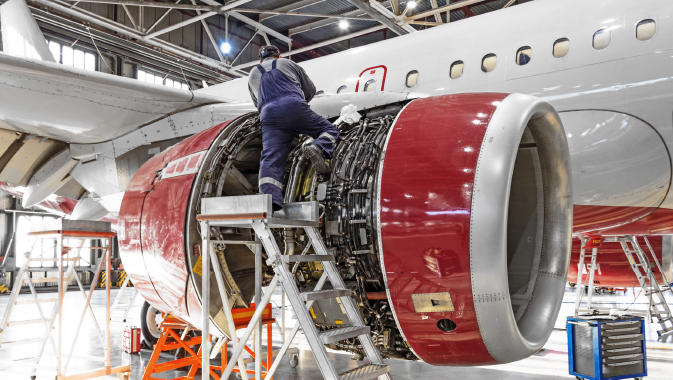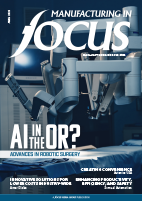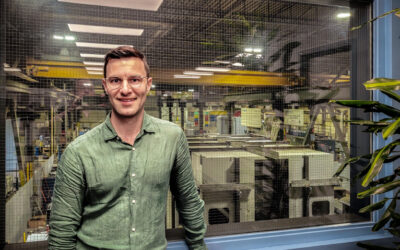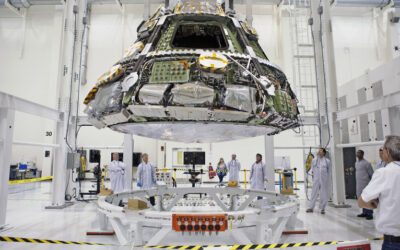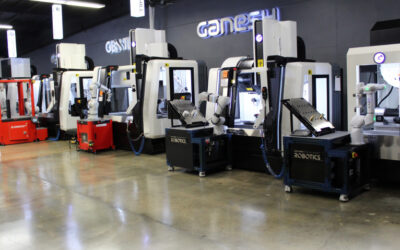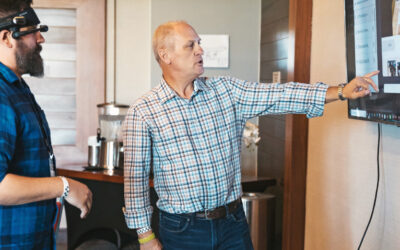‘Mechatronics’ was a name coined by Japanese engineer Tetsuro Mori 50 years ago, and trademarked in 1972. Today, most will understand it immediately as meaning ‘mechanical’ and ‘electronic’ activity combined – as in just about everything from hard drives to cars and coffee makers. Mechatronics is a vital part of manufacturing worldwide.
Encompassing elements from mechanical engineering, electrical engineering, and computer science, the field of mechatronics continues to advance. Bringing a high degree of expertise and cross-training across multiple disciplines, mechatronics engineers are active in areas including manufacturing, technology, aerospace, and agriculture.
And as technology changes, so does mechatronics; as mechanical systems need to be controlled or commanded through a series of sensors, graphical user interfaces (GUIs), pads, touch screens, and so on, there’s a new task for mechatronics.
Adapting to emerging technology
Once upon a time, most mechanical systems were relatively basic, such as farm equipment of a few decades ago. While tractors of those good old days demanded a degree of know-how, they weren’t sent off to an engineer when they broke down, but repaired by the farmer himself.
Today, many tractors outdo high-end automobiles not only in price but complexity, with highly evolved technology including touch screens, Global Positioning Systems (GPS) and Geographic Information Systems (GIS) that allow for hands-free operation. These devices – integrating mechanics, electronic components and computers – enable farmers to collect all sorts of data that help them perform their jobs with greater efficiency, whether in darkness or bad weather. Today, with such a high degree of mechatronics, repairing broken-down tractors in the field needs a lot more than a wrench and socket set and some farmer’s gung-ho attitude.
Mechatronics in manufacturing
Advancing as a discipline at considerable speed, mechatronics today is muscling its way into almost every industry, from agriculture to health care. For students considering mechatronics as a career, employment opportunities will expand geometrically as they master the abilities necessary to employ multiple disciplines for the creation of complex solutions which are not only highly effective, but also cost-efficient.
This is especially evident in manufacturing, where practitioners must be educated in subjects including mechanical and pneumatic systems, AC/DC drives, hydraulics, programmable logic controller (PLC) interfacing, rotary and linear motion control, instrumentation and process control, robotics and automation systems, and other critical areas.
Across North America, a growing number of universities offer courses in mechatronics. These include the University of Waterloo and Simon Fraser University in Canada, and a host of institutions in the United States, such as the University of Michigan, Georgia Tech, the Massachusetts Institute of Technology (MIT), and UC Berkeley.
In fact, an increasing number of community colleges and even high schools are offering courses in mechatronics; as manufacturing systems become more complex, the demand for engineers cross-trained in mechatronics will increase. Even home hobbyists can take part and build their own combat robot, mechatronic race car, electronic cannon, or even a mechatronic talking head by following instructions in promising-sounding books like Newton C. Braga’s Mechatronics for the Evil Genius.
Putting mechatronics to work
Although the history of mechatronics is not a lengthy one, it has rightfully earned its position in engineering, particularly when applied to advanced manufacturing. By uniting mechanical, electrical and computer systems into mechatronics, many companies are able to produce products of consistent quality faster than ever before.
While manufacturers generally haven’t found anything that improves on the basic assembly-line concept invented by Ramson E. Olds of Oldsmobile and developed by automobile giant Henry Ford, well over a century ago, mechatronics has brought the products being produced into the space age, probably looking like magic to an observer 100 years in the past, and almost unrecognizable from even a few decades ago.
In advanced manufacturing, mechatronics is used in control systems to maximize efficiency through a series of sensors monitoring such conditions as heating and cooling. Other sensors are used to calibrate physical properties of items such as size and weight. Precisely tracking every stage of production, mechatronics ensures assembly line systems – which use belts to move items from one stage to the next – work flawlessly, even stamping best-before dates on packaged products not after, but during manufacturing, saving time.
Compared to the mechanical-based manufacturing processes of the early 1970s, which rarely had complex electronics, mechatronics today is light years ahead. In the early days of mechatronics, implementation of the technology was for products incorporating servo motors, such as vending machines and automatic door openers.
By the 1980s, microprocessors had found their way into mechanical systems, with communications becoming part of systems in the 1990s, so that manufacturing systems could be connected and talk to one another.
The future of mechatronics
Recently, a great deal has been written about the shortage of skilled tradespeople, such as electricians, welders, plumbers, and carpenters. Increasingly used in manufacturing, is it possible mechatronics can fill the void in other industries? In fact, yes.
When applied to robotics, mechanical, electronic and computer system integration can be used for many applications. Already widely used in many of today’s manufacturing facilities, there is literally no telling just how far mechatronics will go. Tellingly, ‘robotics’ is a very broad term, covering robots as simple as household vacuums or as complex as the latest Da Vinci Xi surgical system.
In the future, consumers will demand more and more convenience, not less, from driverless cars or from intuitive household appliances that sense how much water and electricity to use, and when to turn themselves off. Arguably the biggest offshoot of mechatronics, these extraordinary robotics and robotic systems will continue to integrate with our daily lives, from performing mundane chores like making coffee in the morning and bringing it to us, to vehicles working with no more that our voice commands taking us where we want to go.
And although mechatronics has a history of only a short 50 years, the discipline has already made its presence well-known in the world, and will continue to do so in the years to come.

